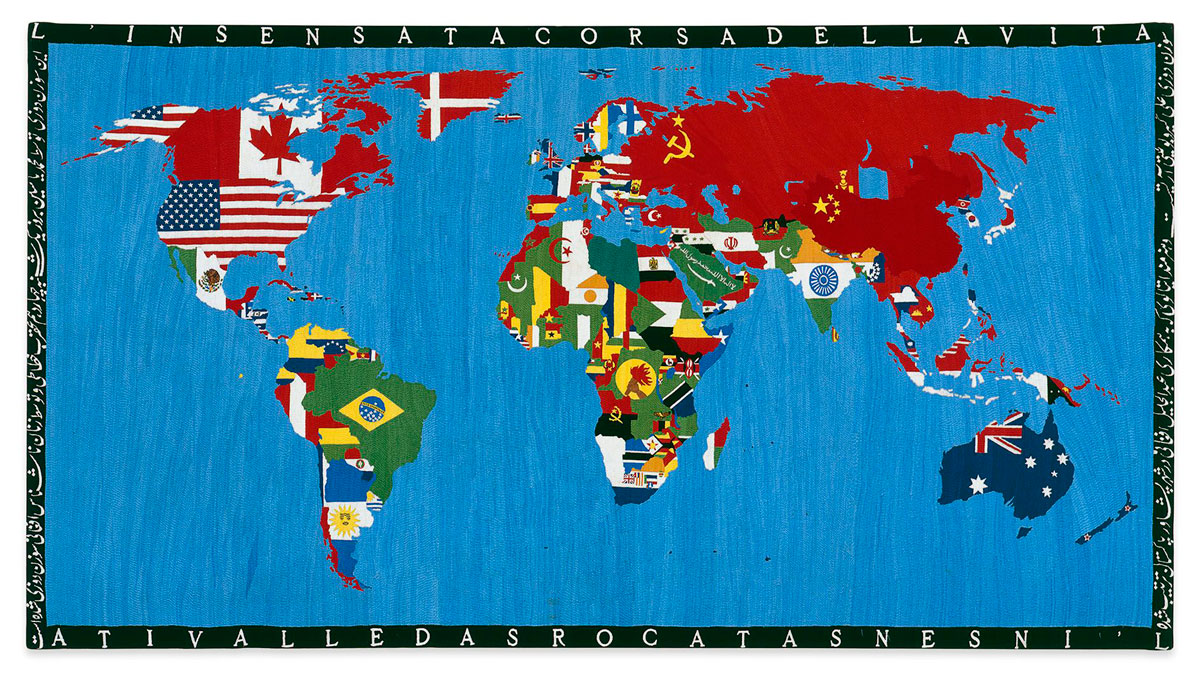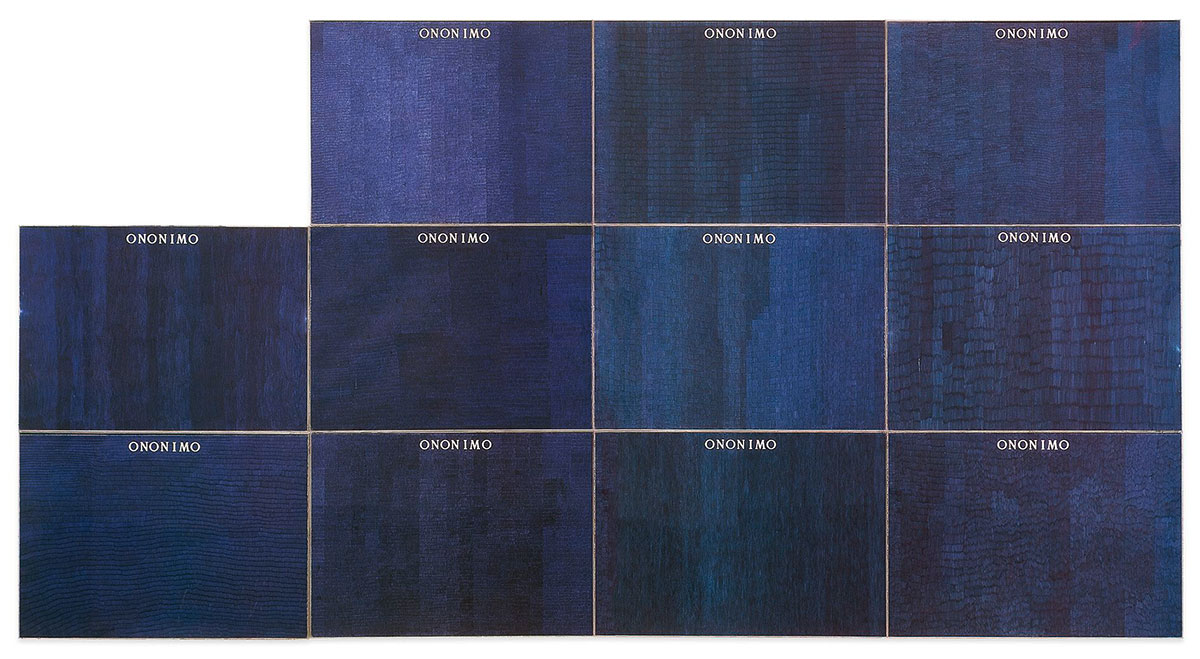ART CITIES: N.York-Alighiero Boetti
 Alighiero Boetti is one of the most important figures in post-war contemporary art and in the history of Italian art more generally. Rising to prominence in the 1960s and originally tied to the Arte Povera movement, Boetti later sought to distance himself from his compatriots and by the start of the 1970s was undertaking investigations into a string of dualities, from order and disorder, to indeterminacy and logic, and classification and boundlessness. Through drawing, painting, sculpture, embroidery, weaving, mail art and conceptual practices, Boetti engaged himself with an unpredictable and expanding global perspective.
Alighiero Boetti is one of the most important figures in post-war contemporary art and in the history of Italian art more generally. Rising to prominence in the 1960s and originally tied to the Arte Povera movement, Boetti later sought to distance himself from his compatriots and by the start of the 1970s was undertaking investigations into a string of dualities, from order and disorder, to indeterminacy and logic, and classification and boundlessness. Through drawing, painting, sculpture, embroidery, weaving, mail art and conceptual practices, Boetti engaged himself with an unpredictable and expanding global perspective.
By Efi Michalarou
Photo: Sprüth Magers Gallery Archive
At the core of Alighiero Boetti’s inventive and conceptually rigorous practice lies a philosophical interest in the liminal space between polarities. Raising existential questions centered around the theme of order and disorder, his modern parables and metaphors playfully delve into the complexities and contradictions of the human condition. Interested in the impossibility of formalizing the world itself, Boetti’s work aims to describe and grasp the present. His conceptual repertoire is based on the temporal and processual dimensions of art and continues to have great influence on contemporary thought. “Insecure Unconcerned” is a solo exhibition of works by Alighiero Boetti, on the occasion of the thirtieth anniversary of the artist’s death. Comprising artworks from four decades and providing an overview of his seminal oeuvre, the exhibition includes “Insicuro Noncurante” (1966–75), “Tutto” (1988) and “Mappa” (1989), “Biro” drawings (1975–78), selected “Arazzi” (1977–94), and “Aerei” (1983–89), alongside rich archival material. Anchoring the show is a portfolio of eighty-one numbered sheets, “Insicuro Noncurante”, a compendium of Boetti’s artistic production between 1966 and 1975. The manifold works on paper outline the fundamental concepts underpinning his extraordinary artistic universe: order and chaos, coincidence and necessity, seeking and finding, similarity and difference, and singularity and multiplicity. These key themes are perhaps best embodied by a 1968 work titled “Gemelli”. A postcard in an edition of fifty sent to friends depicted the artist as a set of twins, surreally holding hands with himself. The doubling and splitting of personality continued not long after when he changed his name to Alighiero e Boetti (Alighiero and Boetti). Tellingly, the figures in Twins are connected by their clasped hands, as are the divided names by their conjunction, implying the oppositions held within one person and the duality of everything. Eschewing the supposed significance of the hand of the artist, Boetti often asked third parties to execute his work. As with all of his embroidery projects, Boetti’s conceptual direction meets the traditional craftsmanship of Afghan embroiderers. Take, for example, “Tutto”, which appears to represent “everything” in the object-filled world, or “Mappa”, which reflects on the systems and classifications we apply to the natural world. The artist provided the idea and created the designs, while the artisans chose the magnificent colors and produced the tapestries. On their surfaces too, sign systems, languages, and ideas converge, conveying a cultural dialogue between East and West. Highlighted by a section that resembles an artist’s studio—walls covered in sketches, ideas, references, photographs, letters, the exhibition showcases how Boetti’s wide-ranging interest in philosophy, mathematics and linguistics percolates his entire oeuvre. The salon hang emphasizes the artist’s associative thinking, visualizing the point of departure for all works on display. Installed among the archival documents are polychromatic word embroideries known as “Arazzi.” Individual letters are set against differently colored square grounds, which are organized into a grid to form phrases and proverbs. Logic and order determine the size of each identical square, the positioning of the letter within, as well as the work’s sentence, while disorder is introduced through the colors and the experience of reading the work. A synthesis of writing and image, Boetti’s word pictures reveal order and its antonym to be far from antithetical—rather, they are interdependent.
Photo: Alighiero Boetti, Mappa, 1989, Embroidery on nettle, 115 × 215 cm, 45 1/4 × 84 5/8 inches, Courtesy Sprüth Magers Gallery
Info: Sprüth Magers Gallery, 22 East 80th Street, 2nd Floor, New York, NY, USA, Duration: 29/3-25/5/2024, Days & Hours: Tue-Sat 10:00-18:00, https://spruethmagers.com/








